African Safari - Feb'19... Part 4
Day 6 (7-Feb-2019)
As usual we started at 6. We planned to go to the nearby Naboisho conservancy today to see the Hippos, but the jungle had other plans for us!
There was hardly any light at that time except for the vehicle headlights. We were not even 10 minutes away from the camp, when suddenly we saw a male lion from the Lemuny pride in the headlights. It was resting near the pathway. We obviously decided to wait there (for the daylight). There was nothing to do for the next 15-20 minutes, we just kept quiet inside the vehicle and even switched-off the headlights.
As soon as there was some visibility, we started clicking (at ISO-16000, testing my camera limits). And as expected the male lion did not wait there much but before going away, he gave a huge roar (probably calling his pride that was resting on the other side of the river bank). Luckily I remembered to do the audio/video recording.
The pride responded in next 5 minutes, one-by-one all the members started showing up. Even the other male lion was with them. On the way, they even drank water from the little stream. Once all members were on our side of the river, the 2 male lions quickly got away into the jungle out of our sights. But the cubs as usual were in their element and we got some more fantastic shots. One of the cubs was mocking their hunting style, it bended very low and hid behind a small bush as if to be ready for the ambush.
One of the cubs was even playing with the baboons nearby. It even climbed a small tree in that process. Even our guide (Edward) commented that it might have difficulty coming down from the branch but it did it perfectly well, sliding down slowly as he had practiced it in the past.
From 6am that we started, till 7:30 we were only with the lion pride. Finally we decided to move ahead as the Hippo pool was little far off.
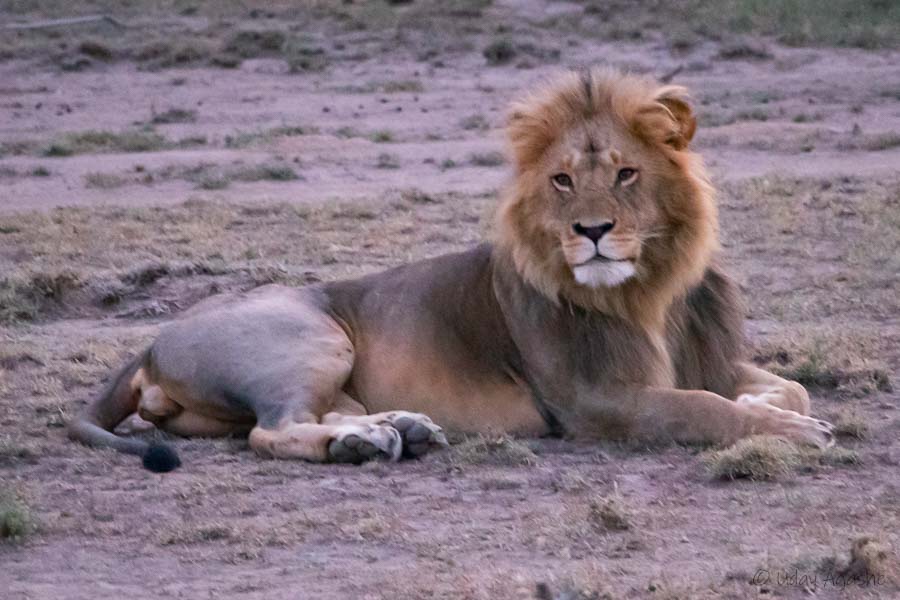
Male lion
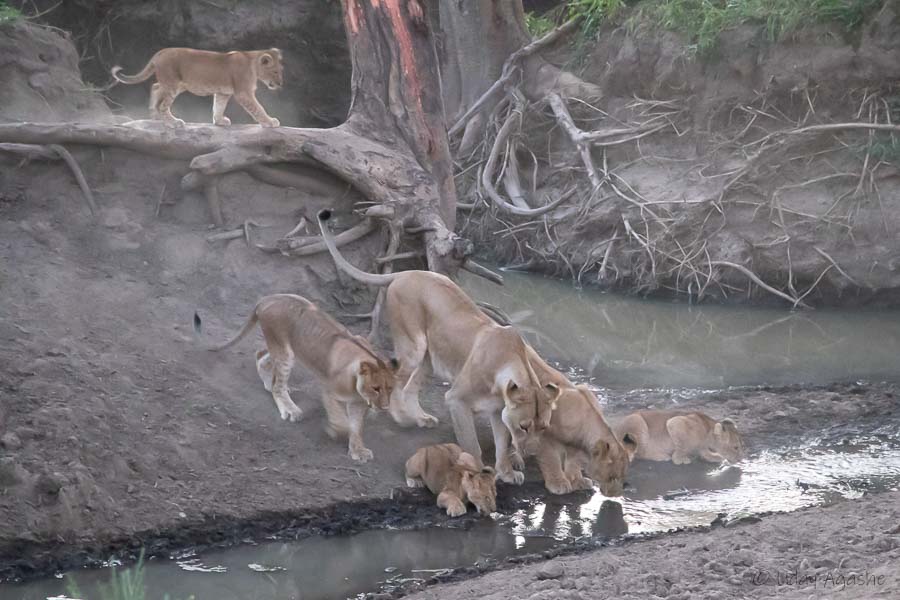
Pride at water
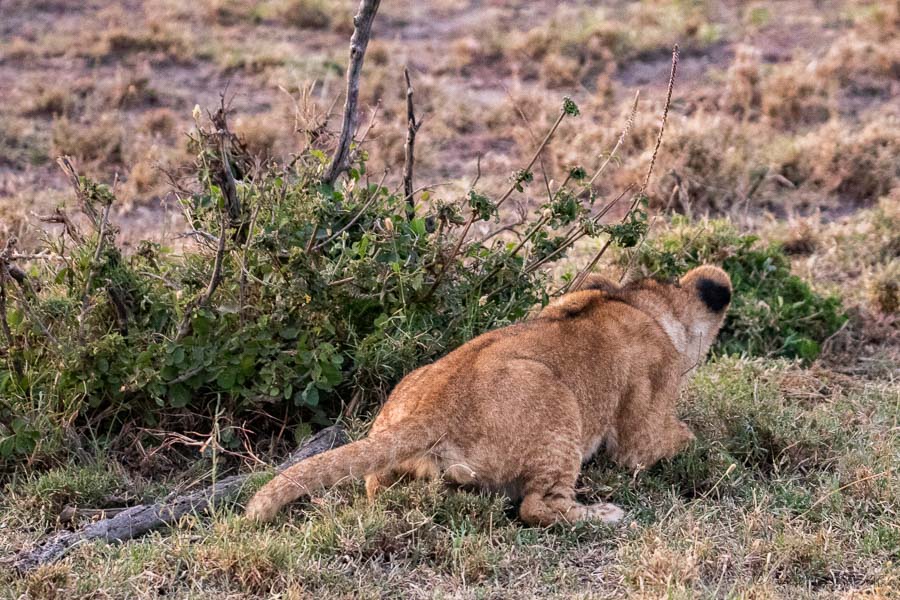
Ready to Pounce
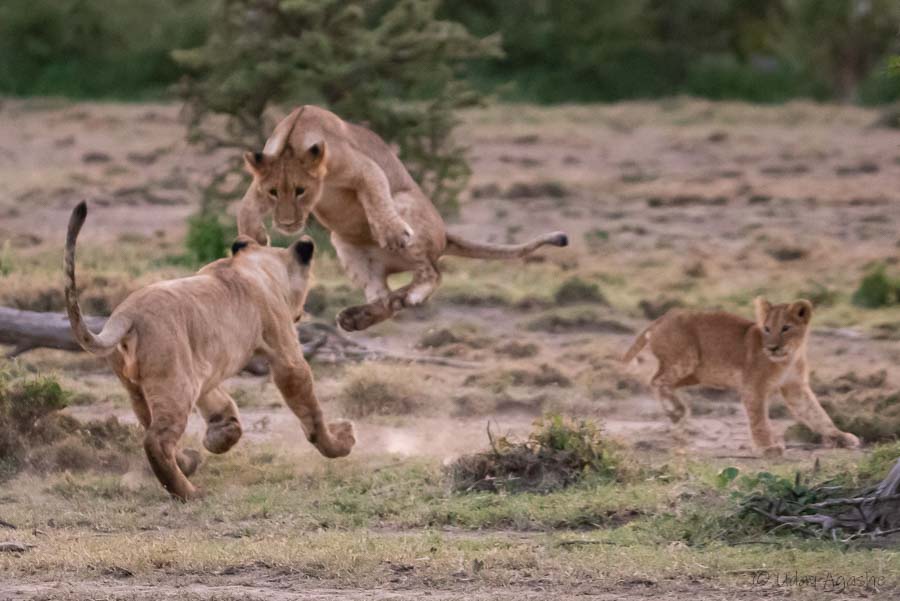
Flying pose
On the way we saw another family of the Masai Ostriches, the black-faced sandgrouse and the Isabelline wheatear. There was a little bit of radio chat that we heard and then we suddenly found ourselves in front of 2 Cheetah brothers on a kill. They were the Emani brothers, about 7 years of age (as per Edward) and they had killed a new born baby of a wildebeest. The poor mother of the baby was watching the cheetahs from little distance. It was an emotional scene but that’s how life in the jungle is. But for that kill, the Cheetahs would go hungry.
The kill was fresh, and the brothers were eating it at full speed (lest some Hyenas get the wind and take it away). Very soon the grass was looking blood soaked, even the faces of cheetahs were red. All the while, they were constantly on their toes. Taking turns in looking around in all directions. From 8am till 9:30, we were at the same location (just changed our vehicle position to get different angles and lighting). The brothers had almost consumed the entire prey in that time even including some of the bones. And after their stomachs were visible full, they started licking of each other’s faces (to clean them of the blood). It seems this cleaning is a must, otherwise the hyenas and other bigger predators may get the smell and will be alert about their location.

Breakfast Time
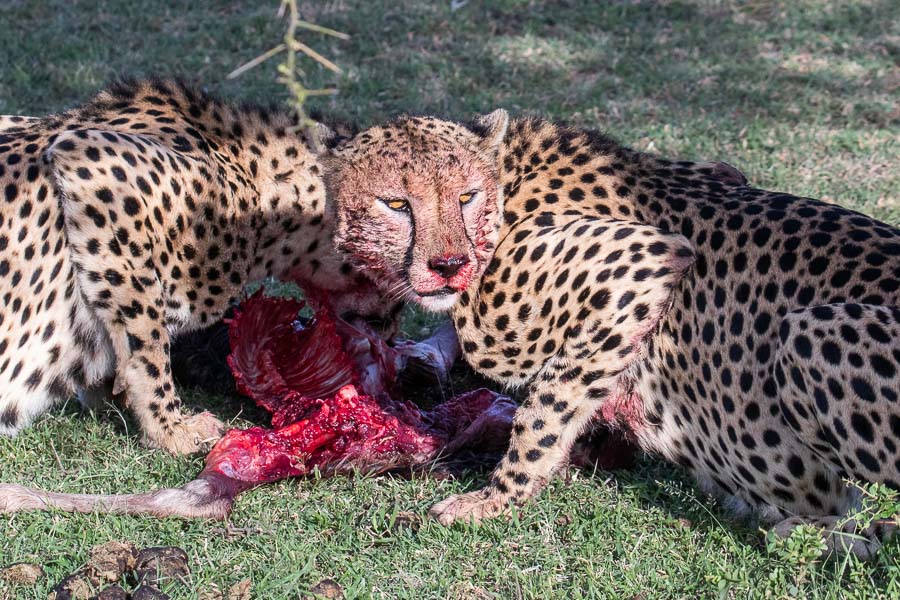
Watchful Eyes

Alert Cheetah

Cleaning
It was already late for breakfast, today we reached a hill-top for the break. Got some aerial views from that place.
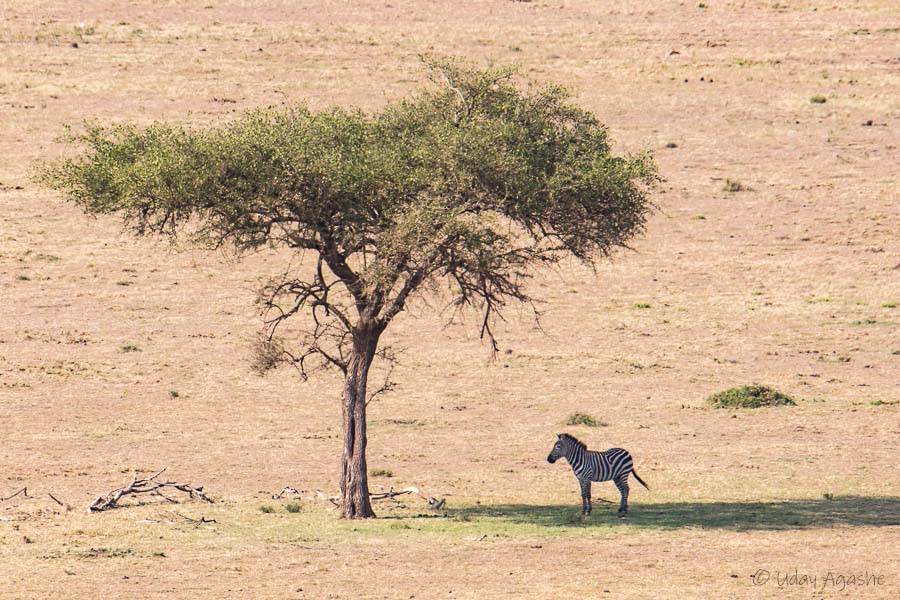
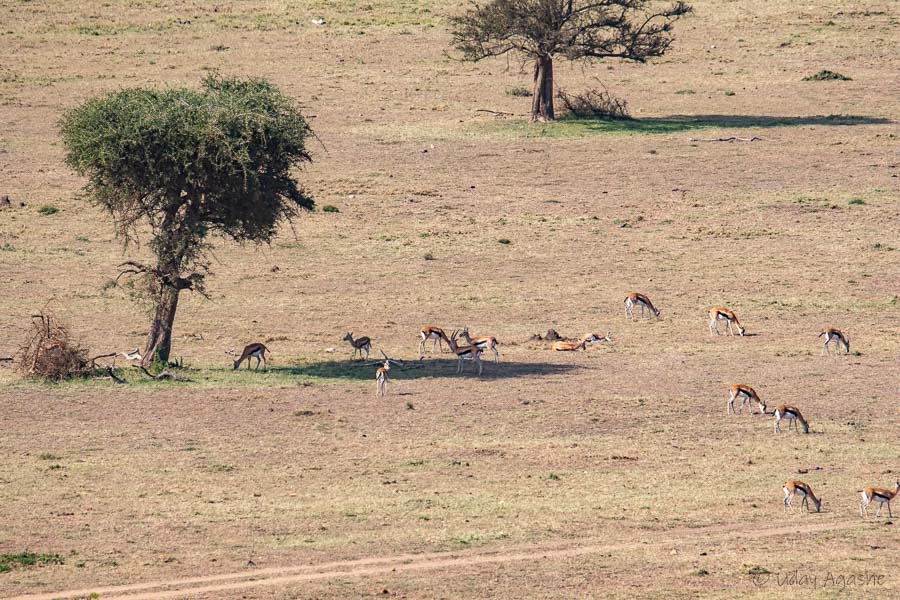
It was about 10:30am by the time we finished our breakfast and then we had to cancel our Hippo-pool plan, but no one was complaining!
We went little further from that place, went around the airstrip on the way and saw some more jungle inhabitants. The usual giraffes, eagles, warthogs were on display. We also saw the “Coqui Francolin” and the pipits. Near our camp location, we saw another antelope variety, the “heartbeest”. Much fairer that the wildebeest and smaller in size. They get the name due to their peculiar horn-shape.
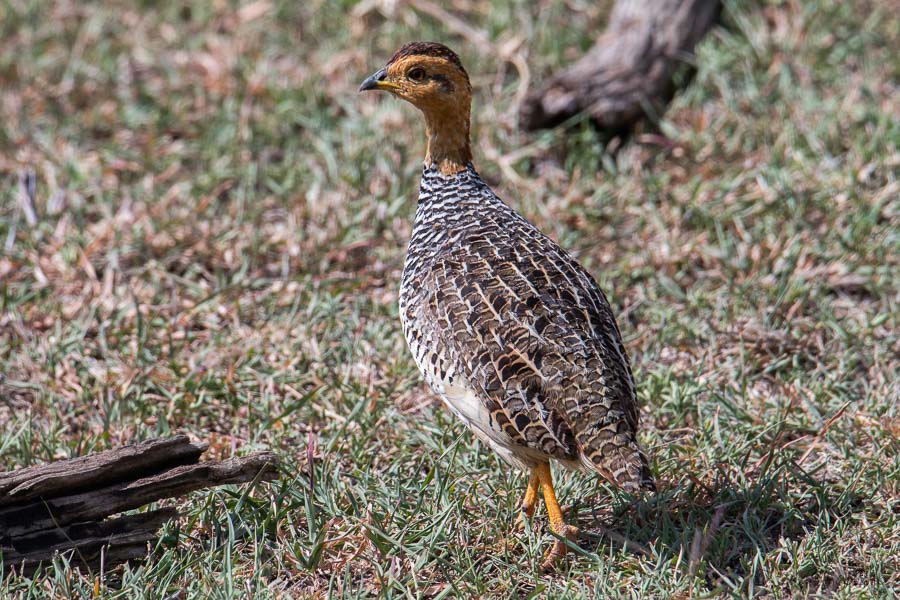
Coqui Francolin
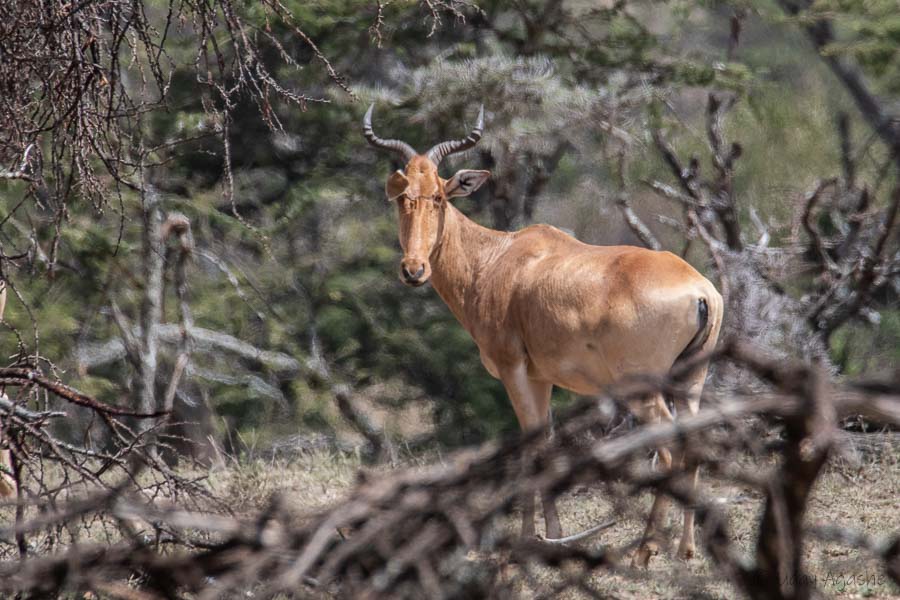
Heart Beest
Back in the camp at about noon and little rest in the tent before 1pm lunch. The sky was looking unusually dark today, we planned to start evening safari at 4 as usual.
Once again nature had something else in mind for us. By about 3, the black clouds completely blocked light and it started raining heavily. It was so much that they had to put the additional tent covers (that they normally put on in the night time). This went on for next 40 odd minutes. The rain had stopped by 4pm but we were unsure whether to go ahead with the safari. Finally by 4:30 we assembled for coffee and then took a call about venturing out into the jungle. So the safari started by 5 giving us barely 60to90 minutes of possible safari time
Our decision to go out was definitely worth. We could see the usual antelopes, zebras but they all seemed to have maintained a different formation today. They all were in a roughly circular area (naturally made that way by the surrounding trees). But besides these usual sightings, we were able to see the “European Roller”, “Rufus-crowned Roller”, Magpie Shrike and the common rock-thrush.

Wildebeest Formation

Magpie Shrike
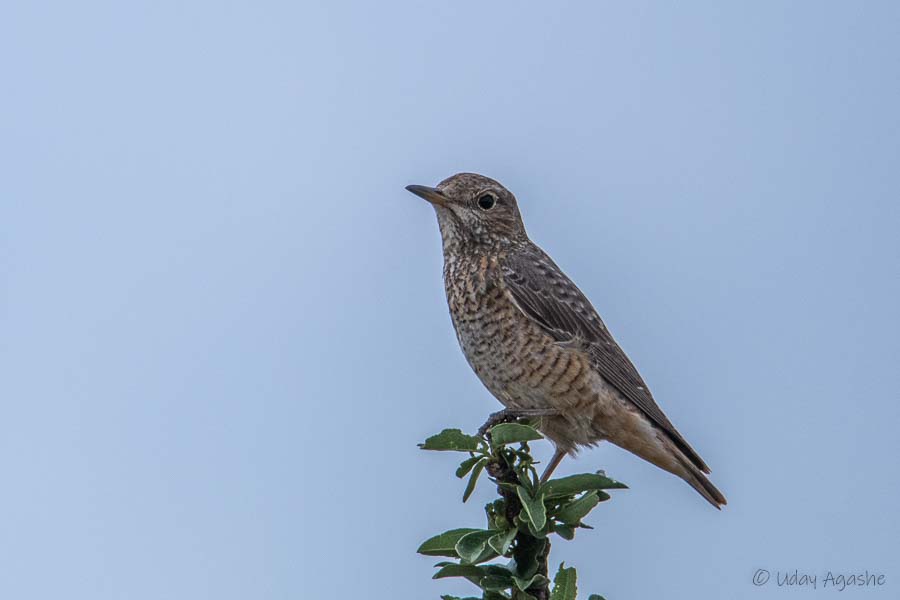
Rock-thrush
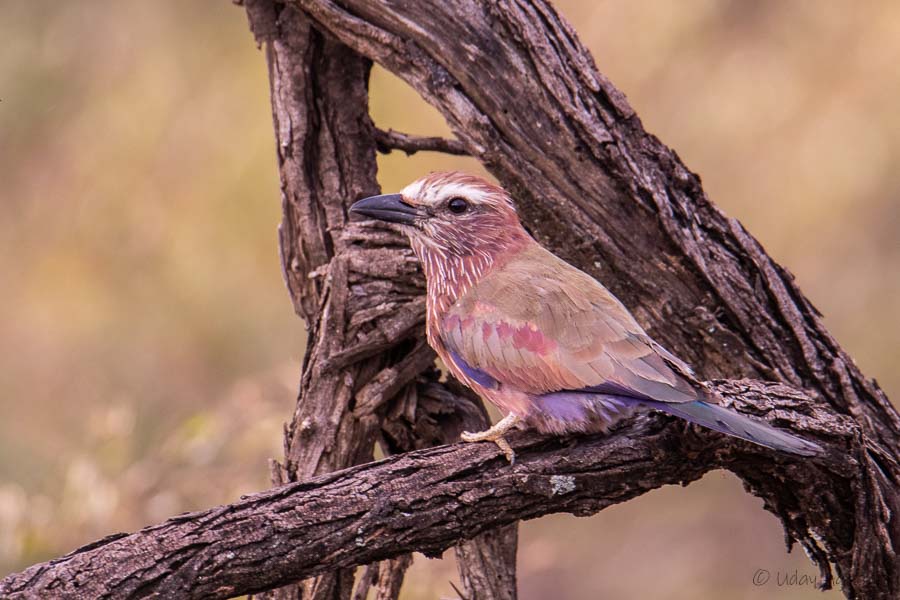
Rufus-crowned Roller
And before we were back in the hut, we once again saw the lemuny pride. They all looked very sleepy but little later the cubs started their usual activities and soon all were up (but not very active). The males as usual were not on the scene. Even when sleeping, the cubs were up to their tricks and kept us fully entertained.
At one point, one of the lioness suddenly seemed alerted and started slowing walking in that direction (away from us), even the others were looking in the same direction. 2 of the elder cubs then moved behind for some distance but nothing happened beyond that. The smaller cubs once again moved back to their relaxed antics.
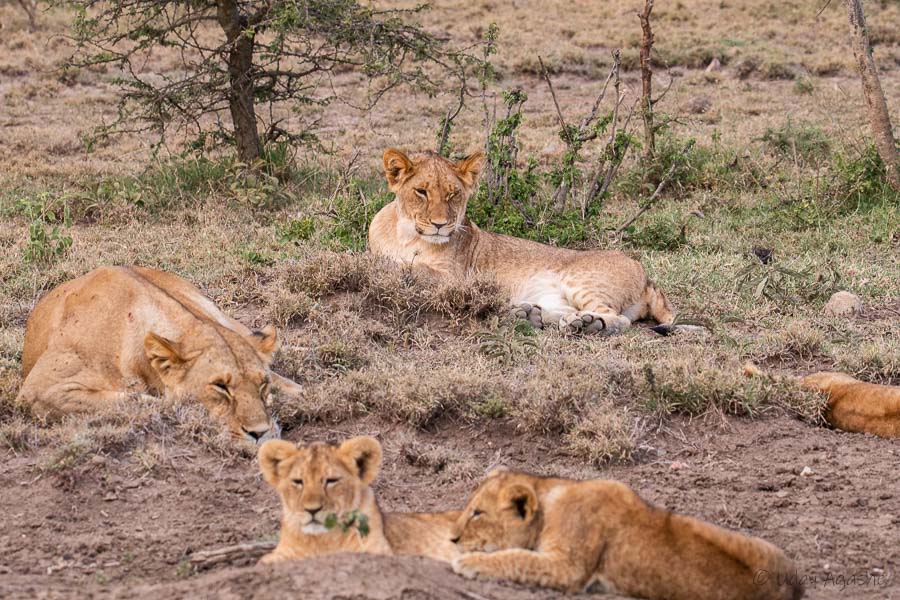


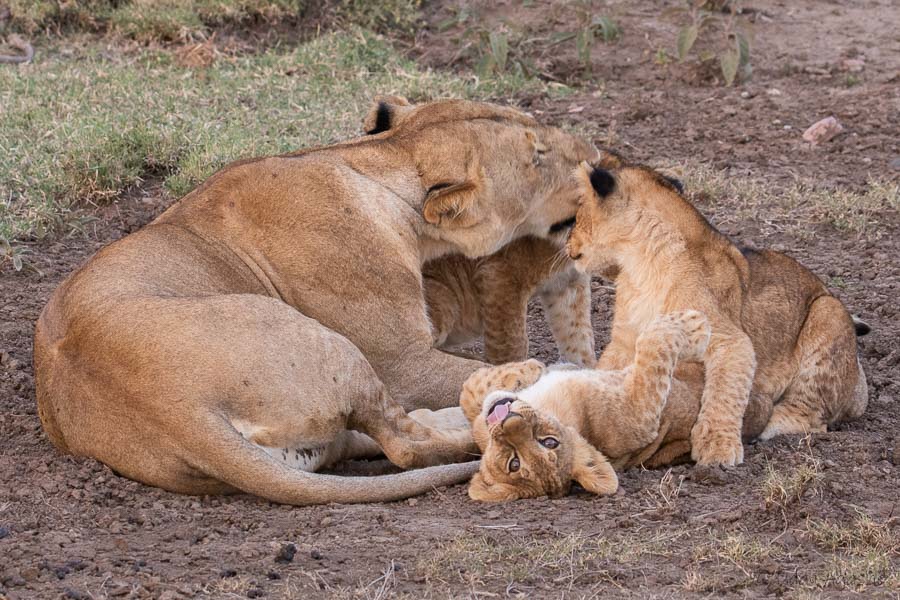
We then though of checking on the males nearby and they were found about 50 meters away. This time we saw all 3 males of the pride. They all looked deep in sleep. One of them briefly opened his eyes (possibly because of the noise our vehicle may have made).
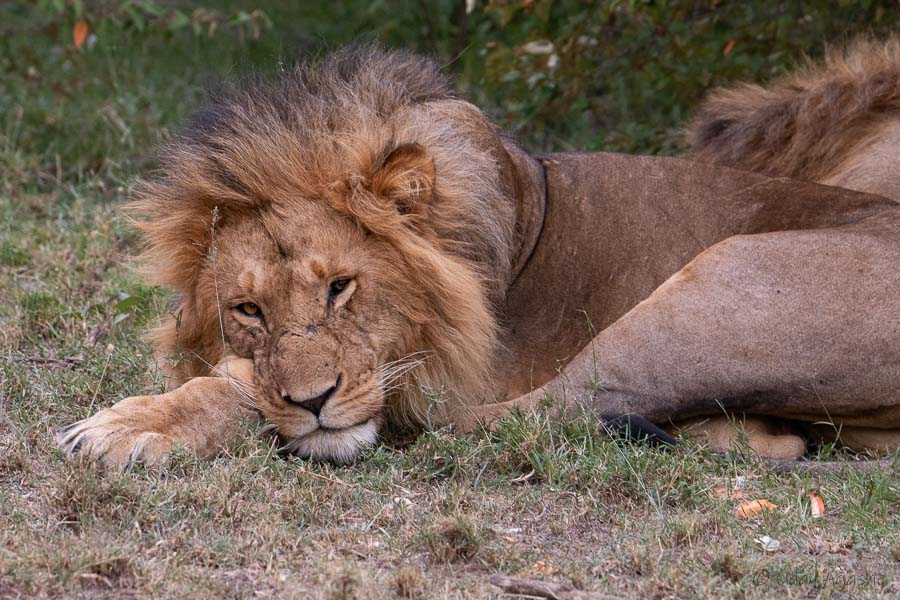

We then had our sundowner snacks inside the vehicle and came back to the camp.
Today we had planned to take a night safari as well. This was going to be a brief affair, possibly an hour’s ride in the dark. Plan was to start by 10pm and come back before 11. With the last 5-6 days of jumpy rides (and all the dust we had inhaled throughout), I was feeling feverish and thought of skipping the night safari. But then, didn’t want to miss out on that experience and ended up joining anyway.
We had heard about the safari vehicles being fitted with red lights (that are less harmful for the jungle dwellers) that will allow photography but that wasn’t the case. We could watch the animals only in the headlights of the vehicle, so obviously no photos!! But we did see a few species that were not to be seen during day time (Genet Cat, spring-hares, white-tailed mongoose and the bat-eared foxes).
All that was quickly done (since there was no question of photography, not much time was spent at any spot) and before 11 we were back.
Day 7 (8-Feb-2019)
Today again we planned to reach the Hippo pool in the Naboisho conservancy. Started on time in the morning and we did not stop for anything in between for almost an hour.
We had reached on a huge land plateau and could see some stationary vehicles that indicated something. When we reached near, our guide informed that it was a nomad lioness (not part of any pride) that probably had strayed in this area. She was walking slowly and the prey-base (wildebeests, gazelles, etc.) was actually following her moves. This was contrary to the usual scenario of predator walking behind the prey. But they had their fear; once-in-a-while, when she looked in their direction, the wildebeest started running away quickly but again came back to the task of following her. She appeared to have carried some eye-injury.
She was constantly on move and within 5 minutes went out of sight. We then moved on towards the hippos.
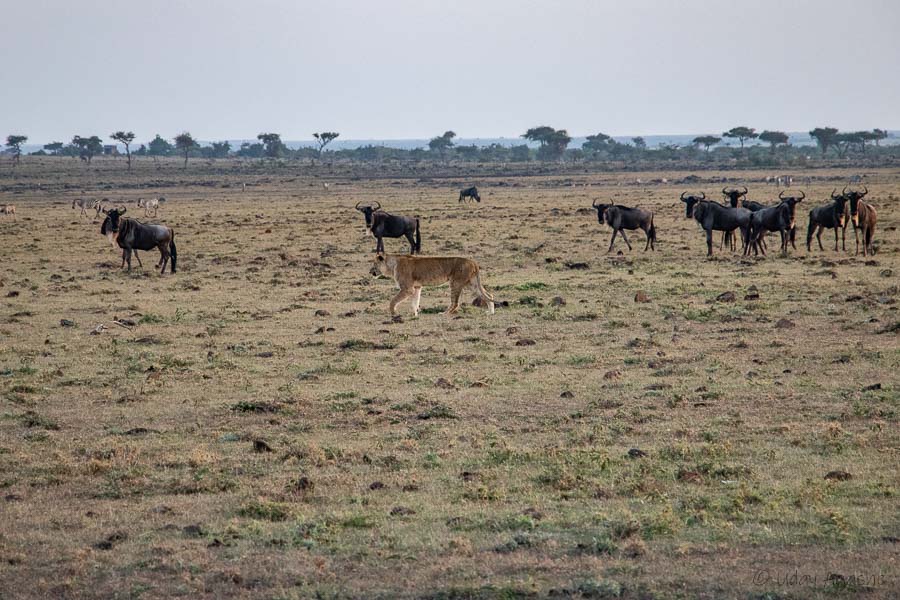
Lioness

Injured Eye
While on the way, we saw a jackal trotting away carrying a piece of meat.. little further we saw the source of this meat as well. There were 2 hyenas on a zebra kill. Not sure if they had made the kill themselves but they were firmly in command. They were allowing occasional intrusion by the jackals. 1-2 vultures were around too; but pretty soon their number increased dramatically. One of the hyena then did a smart move, he just hacked a big piece of meat and ran away with it, the other one stayed back though. They seem to have had a nice pecking order established.. the hyena was at the top, eating as well trying to keep the jackals away, the jackals were seen hurrying onto the vultures shooing them away and the vultures themselves were also having some hierarchy. It was fascinating to watch the drama being unfold in front of our eyes.
We did spend 20 odd minutes with that group and then moved on.

Hyenas of carcass
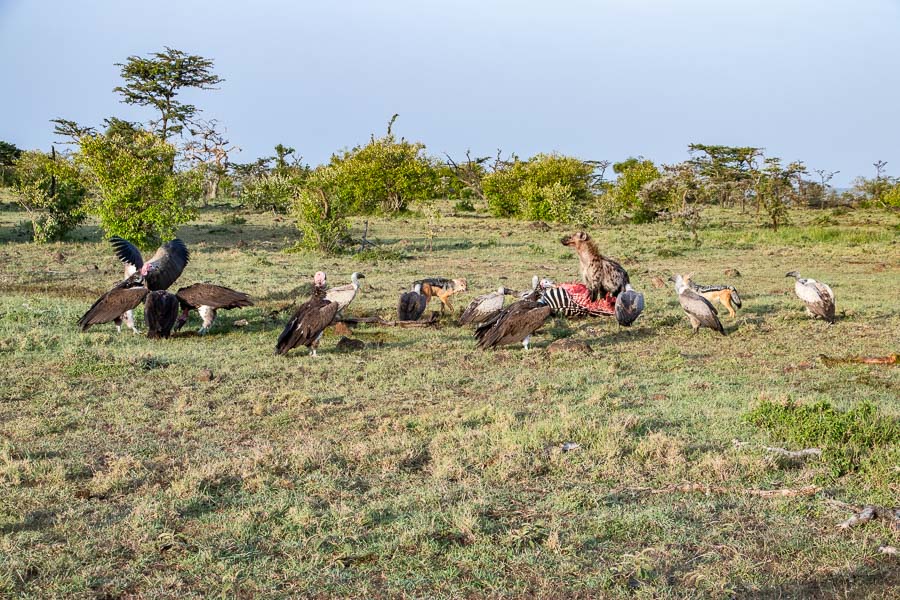
Vultures
It was time for another lion pride. For a change, here we saw the male lion first and then the others. The pride cubs seem to be chewing onto a jute sheet that was covering a water pump-room there. One of the older cub was even seen with a plastic mug. Our guides immediately took note of that (to inform the forest officials as the litter there was man-made and should have been disposed off properly). Their activities were worth waiting for and another half hour was spent on it.

Another Male

Cub with Plastic
The hyena/jackal/vulture drama that we saw earlier probably had more participants. We saw one more hyena (pretty far-off from the kill site) that had run-away carrying a zebra-leg and it was chewing onto it at leisure.
On the way could also see a group of banded mongoose. They were very quick on their feet and were well camouflaged in the dry grass. Was a very difficult task to take a meaningful photo.
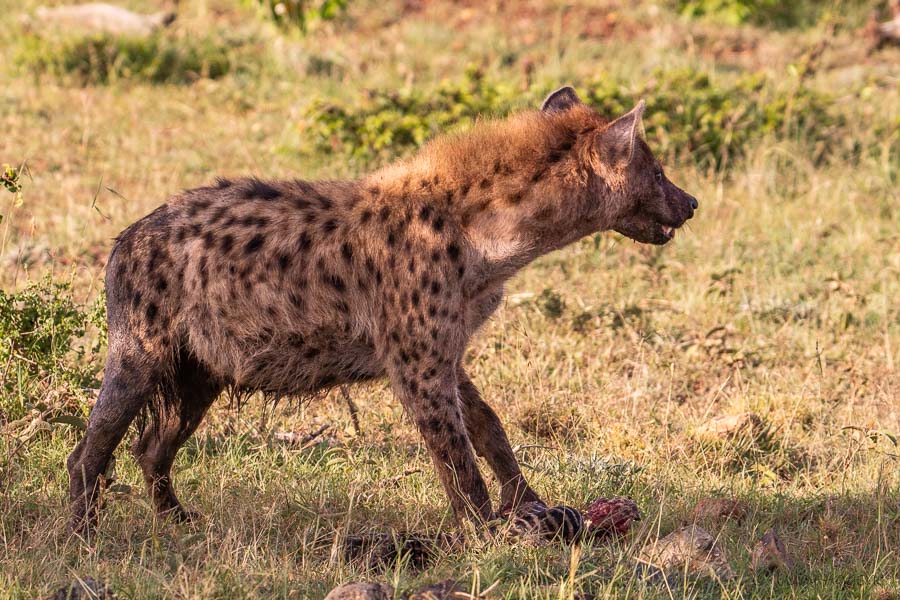
Hyena with Zebra Leg
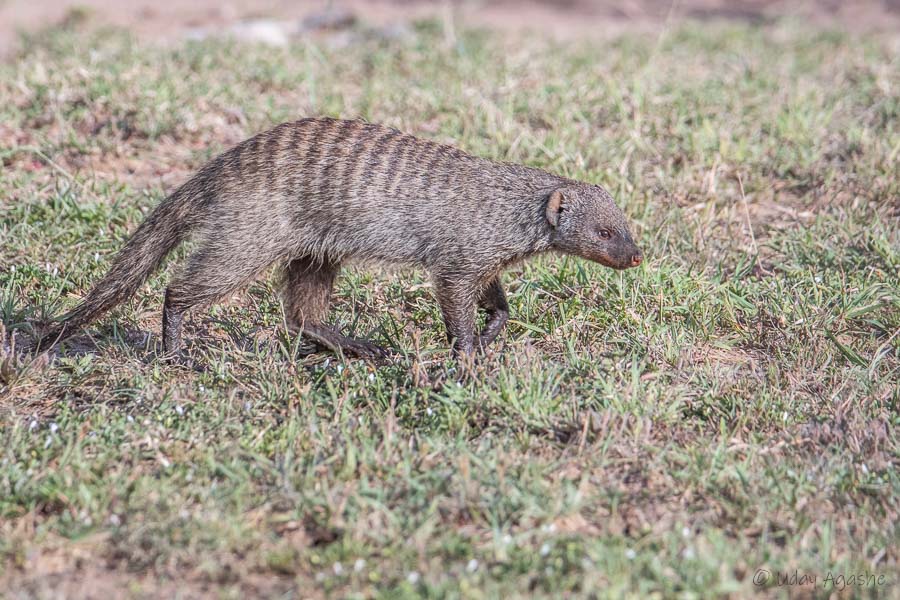
Banded Mongoose
From then, although we had decided to go straight to the hippo-pool, we had to stop at multiple places to capture the avian verities that was unavoidable.

Bateleur Eagle
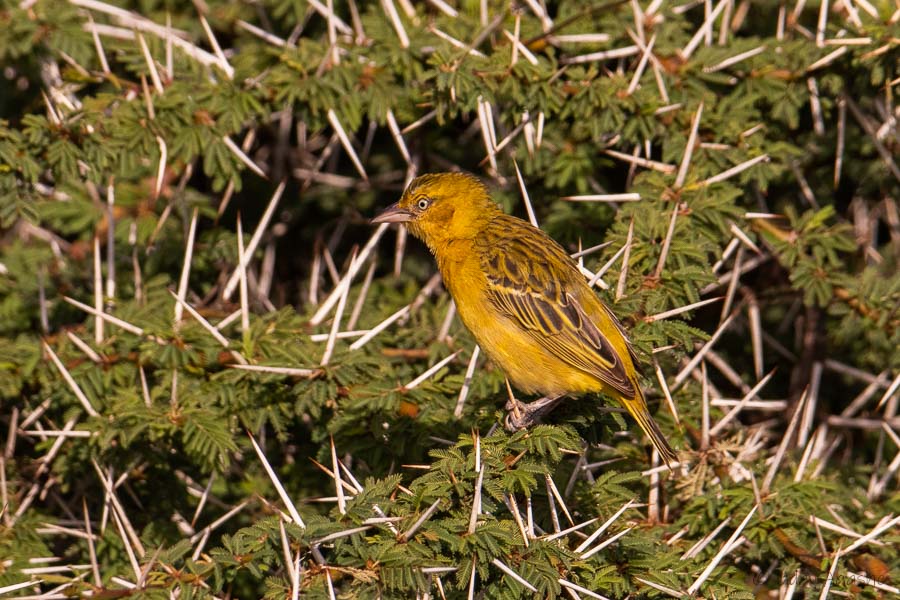
Northern Masked Wever - Female
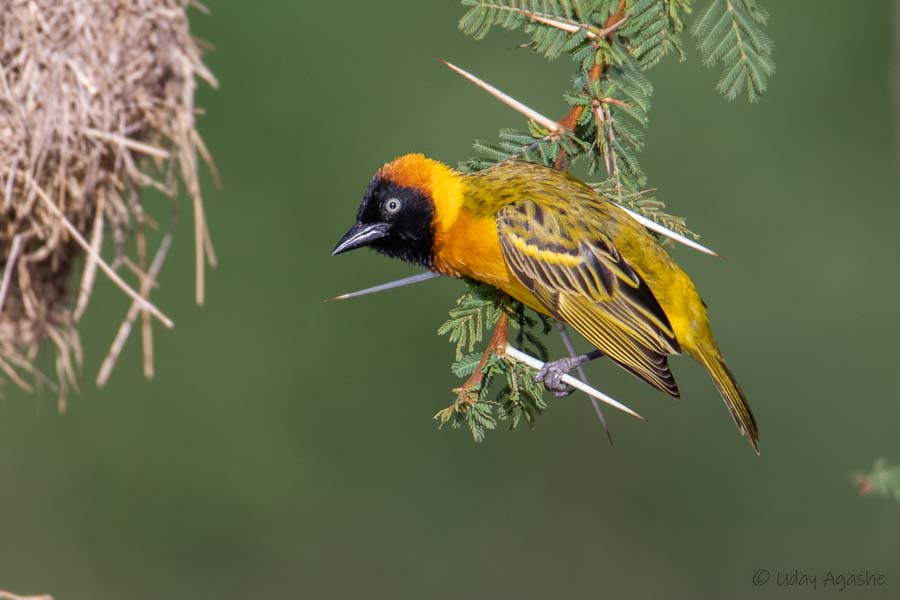
Northern Masked Wever - Male
Finally by about 9am we reached the waters and were little disappointed with the scenes. The hippos were deep in the dirty waters and the place was actually stinking. The hippos are known to drop the feces in the same water that they occupy. We barely stayed for 5 minutes at that place for a few photos (after all, we had come so far for the hippos, we had to take the photographic evidence).
It was also time for breakfast, so we found a clean place away from the hippos and quickly had our bytes. By the way, today we had poha for breakfast (made by the Masai cooks). We could observe some birds around, so it was almost like camera in one hand and the plate in the other.
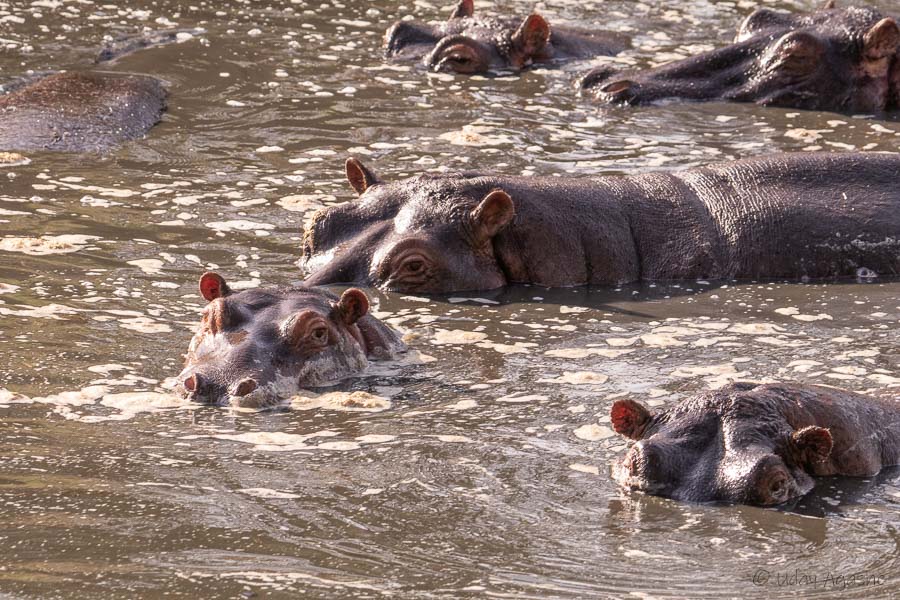
Hippos

African fish-eagle

Striped Kingfisher
On the way back, we once again came across another cheetah family (mother with 3 cubs). Although we had seen the cheetahs many times, every location/family offered new photo opportunities and we spent another 15 minutes there.
We then witnessed a nice jumping session by the impalas. They were roaming around all sides of our vehicle, we stopped at one point observing their movements and saw the nice air-jumps. We also had a mother-juvenile pair of the Topi antelope.
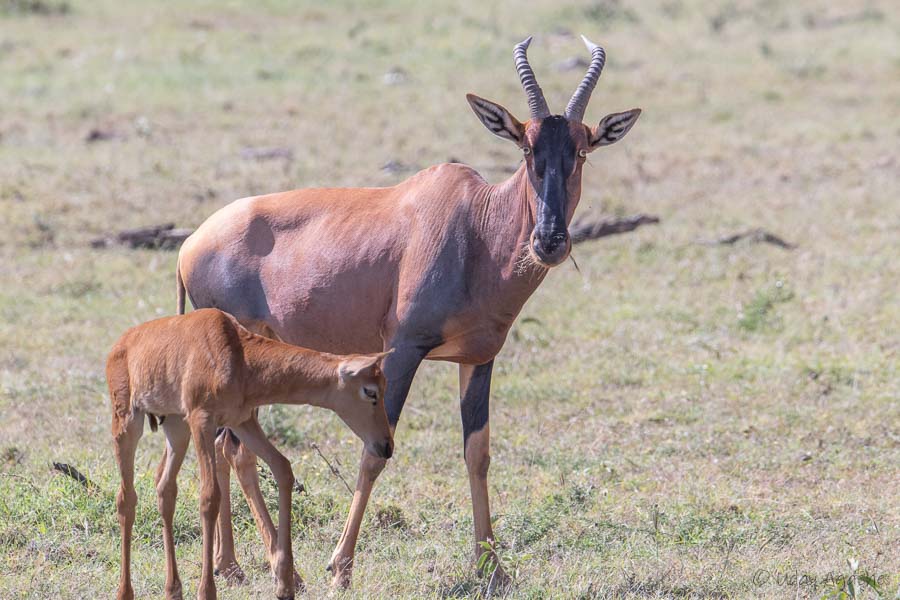
Topi with juvenile

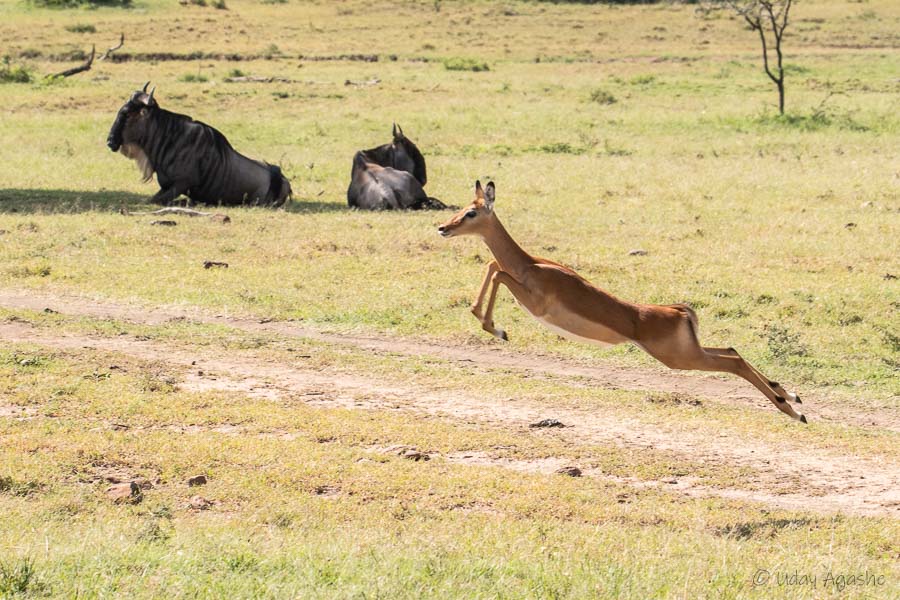

Back in the campus we were greeted by few more birds.
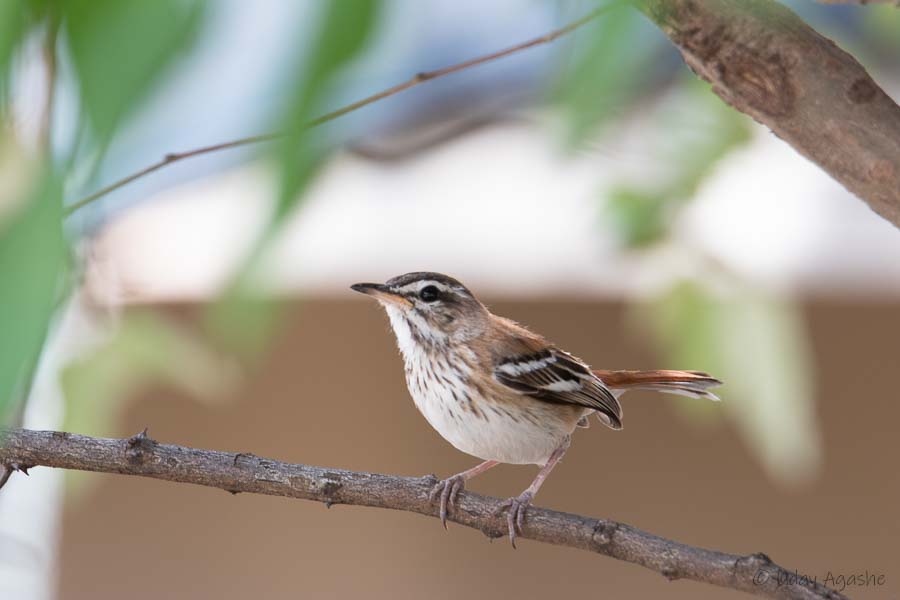
White-browed scrub Robin
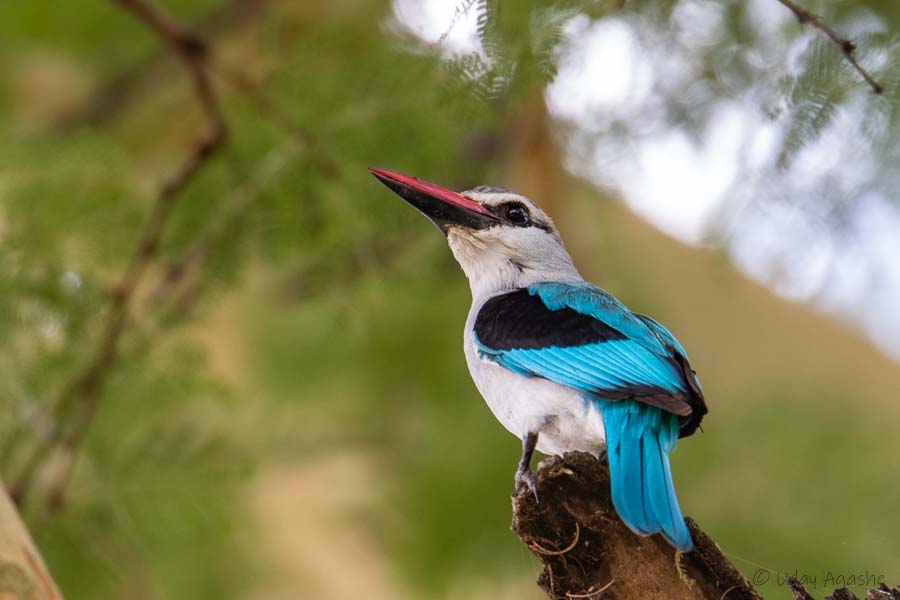
Woodland Kingfisher
We were hoping our last safari round in the evening would give us some more jungle memories but our camp manager John had predicted another rainy evening.
There was no rain till 4pm and we embarked as planned (the weather was cloudy though). Close to our camp we came across 2 huge tuskers. One of them came perilously close to our vehicle once (I actually got a bit worried and asked the guide to move-on.. but he being a seasoned campaigner, stayed-put thereby giving us some close distance action). One of them was carrying a tree-branch with him (our guide mentioned that it was a top branch with fresh leaves and he did not intend to share it with the big-brother, so decided to carry it with him).
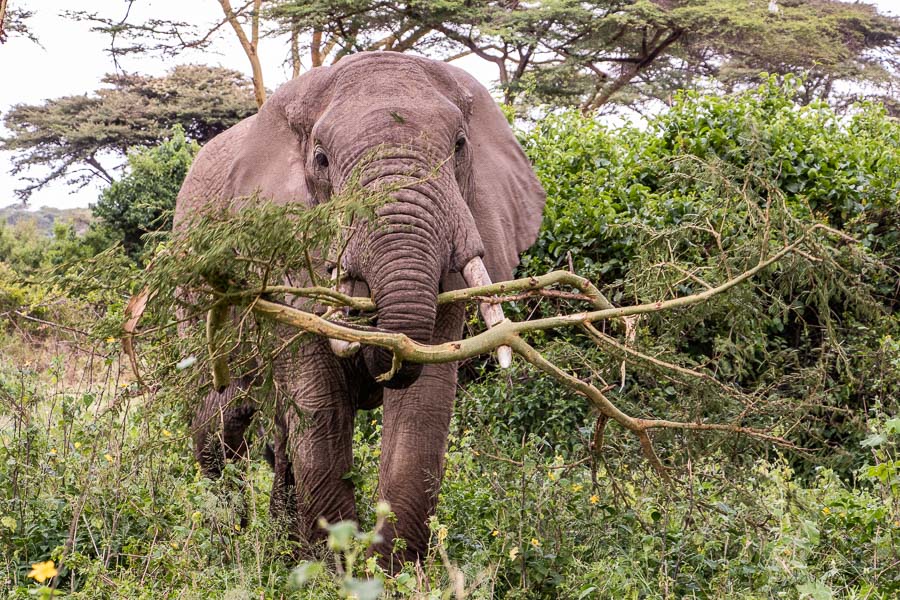
Elephant at close distance
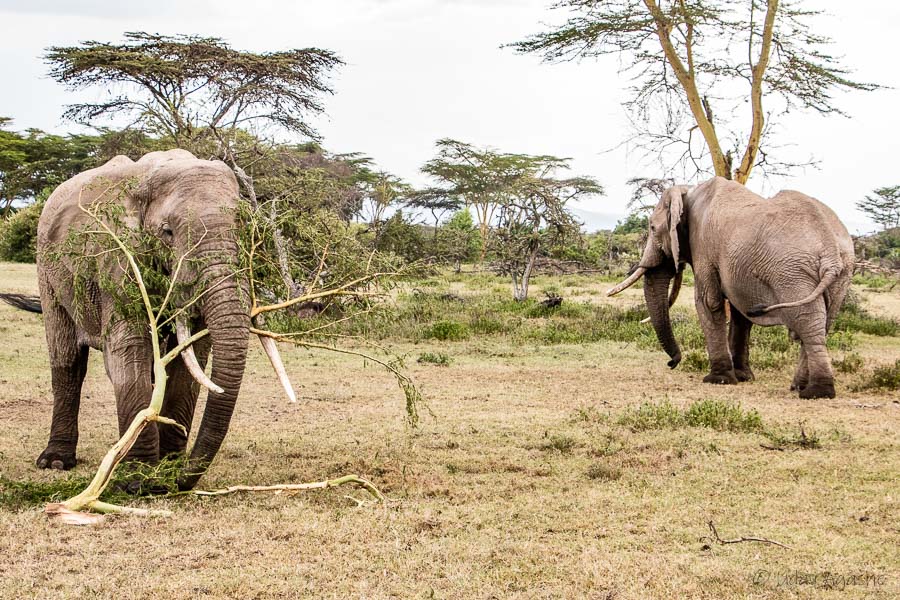
That was the only wildlife we could see that evening as the rain started within 5 minutes. The intensity increased and we had to cover our vehicle-top and at one point even closed the windows thereby blocking our visibility. It did not stop till it was sun-set time and we barely had time to have our sundowners. We had our snacks in company of the setting sun and then returned back to the camp.
Day 8 (9-Feb-2019)
This was going to be our last day in Kenya and all the time was anyway expected to be spent traveling. But we had a quick walking tour in the morning (before breakfast) to the surrounding areas of the camp. We also went on the white-rocks that we could see from our tents. It offered us a nice sun-rise view.
We then walked along (with our Masai Guides) in the open jungle, it was a different experience. The gazelles, wildebeests and other inhabitants were much more careful when we were on foot. They used to keep the distance even when we were inside vehicles but when we were walking, they saw us from distance and ran further away.
We were back within an hour and quickly had our breakfast. It was time also for the customary group picture. Our driver companion till Nairobi had already arrived earlier that morning and with heavy hearts we started our journey out of the jungles. The experience was mesmerizing and no-one would probably be satisfied visiting Kenya only once, so we hoped to be back again sometime in future.

Sunrise Panorama

Our Group with Hosts
Special Thanks to Yuwaraj Gurjar & Makarand Joshi of Vihang Travels for arranging this tour.
Thanks also to all the guides and camp managers/staff from Gamewatcher Safari's, they were really excellent and made our stay very very comfortable all through.